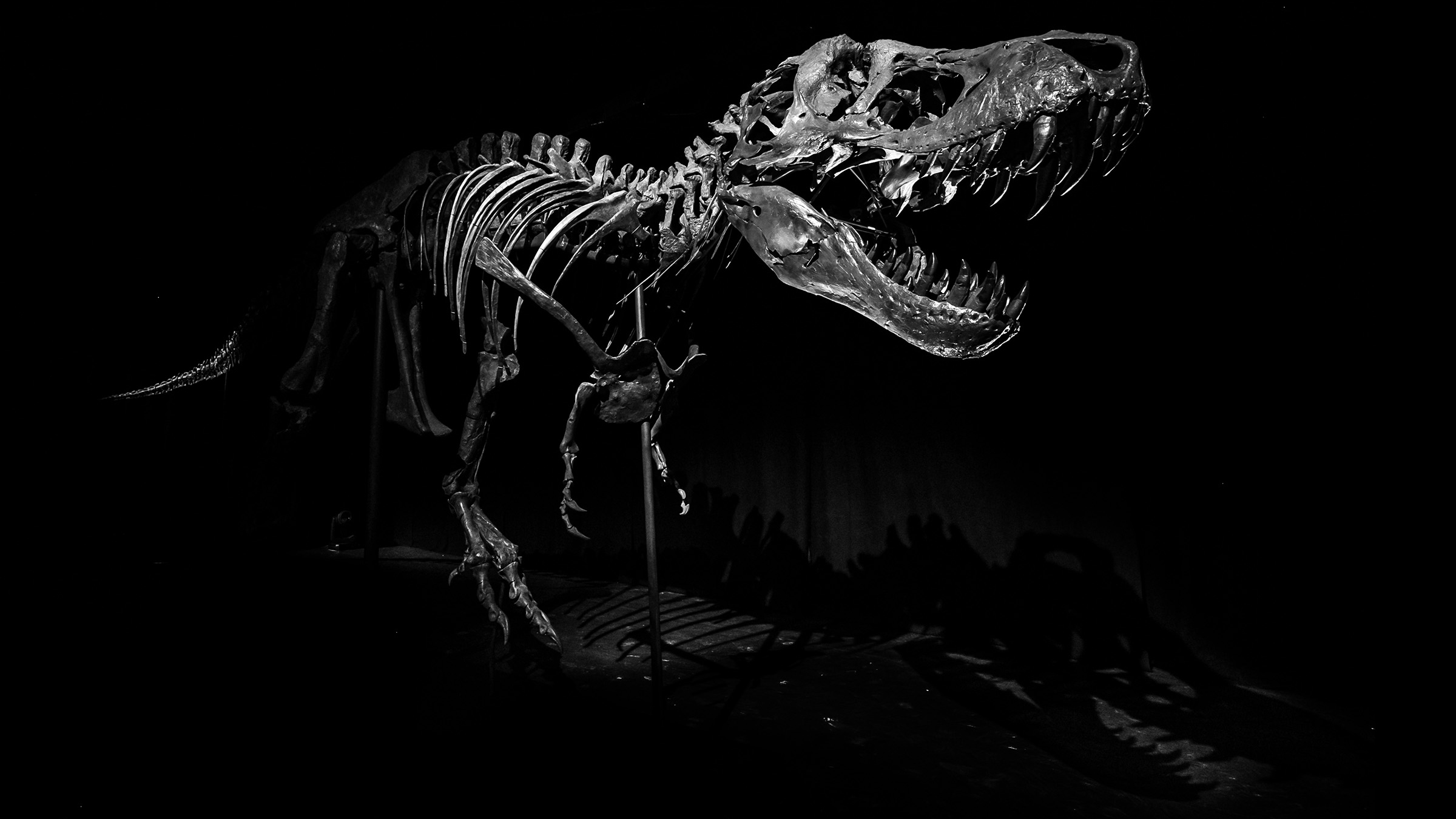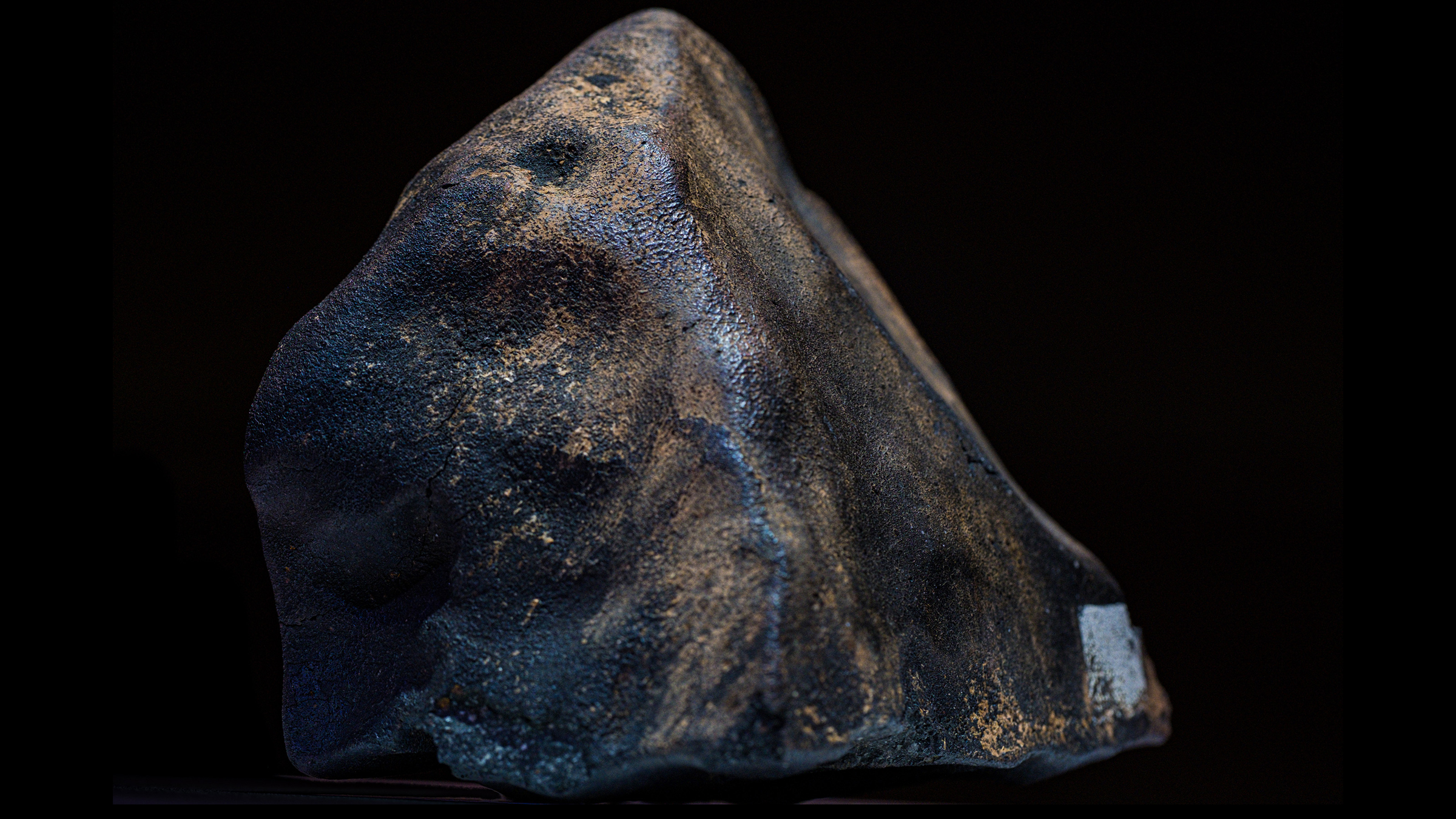Stan, most expensive T. rex ever sold, has finally been found
Its new home is the future Natural History Museum Abu Dhabi.

The menacing remains of Stan, a Tyrannosaurus rex who sold for a record-breaking $31.8 million at auction in October 2020, went to an undisclosed location after the sale but have finally been found: They are now halfway across the world from where Stan once prowled 67 million years ago in what is now South Dakota.
The dinosaur king is now in Abu Dhabi, awaiting the anticipated 2025 grand opening of a Natural History Museum, according to the Abu Dhabi Department of Culture and Tourism.
Stan's location has remained a well-kept secret these past two years. After the nearly 40-foot-long (12 meters) dinosaur became the most expensive dinosaur specimen ever to be sold, hardly anyone knew where it went, including the Black Hills Institute (BHI) in South Dakota, the company that previously owned and housed Stan.
Upon learning that Stan would go on public display in Abu Dhabi, the second-most populated city (after Dubai) of the United Arab Emirates (UAE), Pete Larson, paleontologist, president and founder of BHI, said "I was super, super happy."
Related: Photos: Dinosaur's battle wounds preserved in Tyrannosaur skull


Before Stan went to auction, BHI, a company that supplies fossils for research, teaching and exhibit, took 3D surface scans of the T. rex's fossils. "But still, having the original available for science is just the icing on the cake," Larson told Live Science. "It couldn't be any better. Stan's going to be in a museum and millions of people will see Stan and researchers will have access to Stan's skeleton."
The sale of Stan dates back to 2015, when Neal Larson, the brother of Pete Larson, decided to leave BHI and won a lawsuit requesting that it be liquidated. However, the institute avoided liquidation by instead offering to sell Stan, which a judge mandated in 2018. The auction at Christie's New York received a lot of attention, with many scientists and the Society of Vertebrate Paleontology expressing dismay that such an important specimen might go into private hands, away from scientists.
Sign up for the Live Science daily newsletter now
Get the world’s most fascinating discoveries delivered straight to your inbox.
The private auction sale was managed by Christie's London desk, which often handles buyers from the Middle East. This sparked rumors that Stan was headed to that part of the world, The New York Times reported at the time. Rumors about Stan's whereabouts flared again in January of this year, when actor Dwayne "The Rock" Johnson was spotted on a filmed podcast with a T. rex skull behind him, which he called Stan.
(That skull wasn't the real deal; The Rock had purchased a $11,500 replica of Stan's skull from BHI, Live Science previously reported.)

Now, Stan's location is finally known. According to U.S. trade records, cargo weighing 5.6 tons (5 metric tons) and worth $31,847,500 — Stan's exact price tag — was exported from New York to the UAE in May 2021, according to National Geographic, which broke the story Wednesday (March 23). That same day, Abu Dhabi’s Department of Culture and Tourism confirmed that Stan's new home would be the future Natural History Museum Abu Dhabi.
At about 377,000 square feet (35,000 square meters), the museum will be a "scientific research and teaching institution and an educational resource for learning about the evolving story of our planet," according to a statement from the Department of Culture and Tourism. For instance, the museum will also house the Murchison meteorite, which contains the oldest known material on Earth: 7 billion-year-old stardust, Live Science previously reported.
The statement called Stan "one of the best preserved and most studied fossils of this iconic predator from the Late Cretaceous period," and noted that "this 67 million-year-old dinosaur will be in the care of expert scientists, and will continue to contribute to education and research and inspire future explorers."
The announcement that Stan is going to a museum is likely a relief to many paleontologists, said Darla Zelenitsky, an assistant professor of paleontology at the University of Calgary in Alberta, Canada, who was not involved with the sale or the museum.
"If Stan is now part of a bonafide collection at a natural history museum that can be accessed for education and research purposes, I believe many paleontologists will see this as a win," Zelenitsky told Live Science in an email. It's not ideal to see such fossils sold, but at least in this case, this "invaluable specimen" will be available for future research and study, she said.
Originally published on Live Science.

Laura is the archaeology and Life's Little Mysteries editor at Live Science. She also reports on general science, including paleontology. Her work has appeared in The New York Times, Scholastic, Popular Science and Spectrum, a site on autism research. She has won multiple awards from the Society of Professional Journalists and the Washington Newspaper Publishers Association for her reporting at a weekly newspaper near Seattle. Laura holds a bachelor's degree in English literature and psychology from Washington University in St. Louis and a master's degree in science writing from NYU.









